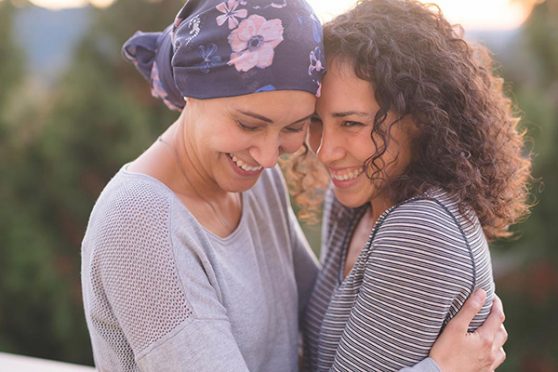One in eight women will be diagnosed with breast cancer in their lifetime. While rare, men can get breast cancer too – about one in 800.
Hartford HealthCare’s Jocelyn Maminta recently spoke with breast surgeon Dr. Valerie Brutus of the Cancer Institute and Breast Health Center at St. Vincent’s Medical Center in about the risk of breast cancer in men and the transgender population.
“This year about 2,600 men will be diagnosed with invasive breast cancer,” Dr. Brutus said. “We don’t want to neglect them. We want men to be aware.”
The type of breast cancers diagnosed in men and women are the same – typically invasive ductal cancers that start in the milk duct. While women are recommended to get annual mammograms beginning at the age of 40, the guidelines are a bit different for men.
“The recommendation for screening is only targeted at men who have been diagnosed with the BRCA gene mutation,” Dr. Brutus said. “Men who are carriers of the BRCA, specifically the BRCA2 genes have a higher incidence of cancer, about 6.8 percent. The recommendation is for breast awareness — for them to be comfortable with how their breasts feel and to be aware if there’s any change. That should start at the age of 35.”
For men, knowing their family history is essential for early detection. Those who have a first- or second-degree relative with male breast cancer, or a first- or second-degree relative with ovarian, prostate or pancreatic cancer, should talk to a genetic counselor to see if they are a carrier of the BRCA gene.
Symptoms of breast cancer in men include changes in their breasts, such as lumps in the breast or under the armpit, nipple discharge or a sore around the nipple. Men who are carriers of the BRCA mutation should do monthly breast self-exams and have a breast exam done by a healthcare professional at least once a year. Mammograms are not currently recommended but may be advised for a man at high-risk beginning in their 50s as most male breast cancers are diagnosed in men in their 60s.
“If we treat men and women in terms of stage of breast cancer, their survival is the same,” Dr. Brutus said. “But men tend to be diagnosed at a later stage because the emphasis on awareness is not as important and we don’t do regular screenings as we do in women.”
Transgender women, or a person assigned male at birth, should also be more aware of their breasts and potential risk for breast cancer.
“There have been some studies that show there is a slightly increased risk for transgender women,” Dr. Brutus said. “It is believed to be associated with the length of hormones being taken. While the risk is low, it is still there and should be monitored.”
The risk for a transgender man, or a person assigned female at birth, is the average risk for a woman if chest affirming surgery or a mastectomy was not performed.
The advice for all individuals, Dr. Brutus noted, is to be aware of risk factors and family history and to see a doctor if any changes are noticed in the breasts.
For more information on breast screenings at Hartford HealthCare, click here.


